1. André T, Boni C, Navarro M, Tabernero J, Hickish T, Topham C, et al. Improved overall survival with oxaliplatin, fluorouracil, and leucovorin as adjuvant treatment in stage II or III colon cancer in the MOSAIC trial. J Clin Oncol. 2009; 27:3109–3116. PMID:
19451431.
2. Lykke J, Roikjaer O, Jess P, Rosenberg J. Danish Colorectal Cancer Group. Identification of risk factors associated with stage III disease in nonmetastatic colon cancer: results from a prospective national cohort study. Ann Coloproctol. 2020; 36:316–322. PMID:
32079050.
3. Kannarkatt J, Joseph J, Kurniali PC, Al-Janadi A, Hrinczenko B. Adjuvant chemotherapy for stage II colon cancer: a clinical dilemma. J Oncol Pract. 2017; 13:233–241. PMID:
28399381.
4. Kumar A, Kennecke HF, Renouf DJ, Lim HJ, Gill S, Woods R, et al. Adjuvant chemotherapy use and outcomes of patients with high-risk versus low-risk stage II colon cancer. Cancer. 2015; 121:527–534. PMID:
25332117.
5. Lee MW, Kim JS, Kim JY, Lee KH. Prognostic factor and survival benefit of adjuvant chemotherapy in stage IIA colon cancer. Ann Coloproctol. 2021; 37:35–43. PMID:
32972104.
6. O’Connor ES, Greenblatt DY, LoConte NK, Gangnon RE, Liou JI, Heise CP, et al. Adjuvant chemotherapy for stage II colon cancer with poor prognostic features. J Clin Oncol. 2011; 29:3381–3388. PMID:
21788561.
7. Baxter NN, Kennedy EB, Bergsland E, Berlin J, George TJ, Gill S, et al. Adjuvant therapy for stage II colon cancer: ASCO guideline update. J Clin Oncol. 2022; 40:892–910. PMID:
34936379.
8. O’Connell JB, Maggard MA, Ko CY. Colon cancer survival rates with the new American Joint Committee on Cancer sixth edition staging. J Natl Cancer Inst. 2004; 96:1420–1425. PMID:
15467030.
9. Benson AB 3rd, Schrag D, Somerfield MR, Cohen AM, Figueredo AT, Flynn PJ, et al. American Society of Clinical Oncology recommendations on adjuvant chemotherapy for stage II colon cancer. J Clin Oncol. 2004; 22:3408–3419. PMID:
15199089.
10. Gill S, Loprinzi CL, Sargent DJ, Thomé SD, Alberts SR, Haller DG, et al. Pooled analysis of fluorouracil-based adjuvant therapy for stage II and III colon cancer: who benefits and by how much? J Clin Oncol. 2004; 22:1797–1806. PMID:
15067028.
11. Pal A, Saada J, Kapur S, Tighe R, Stearns A, Hernon J, et al. Technical and clinical outcomes after colorectal stenting in malignant large bowel obstruction: a single-center experience. Ann Coloproctol. 2021; 37:85–89. PMID:
32178502.
12. Tebala GD, Mingoli A, Natili A, Khan AQ, Brachini G. Surgical risk and pathological results of emergency resection in the treatment of acutely obstructing colorectal cancers: a retrospective cohort study. Ann Coloproctol. 2021; 37:21–28. PMID:
32178504.
14. Li D, Jiang Z, Xiang L, Yang C, Long F, Liu W. A retrospective study based on SEER database: not all high-risk factors are equal for stage II colon cancer. Transl Cancer Res. 2022; 11:689–698. PMID:
35571652.
15. Meyers BM, Cosby R, Quereshy F, Jonker D. Adjuvant chemotherapy for stage II and III colon cancer following complete resection: a Cancer Care Ontario Systematic Review. Clin Oncol (R Coll Radiol). 2017; 29:459–465. PMID:
28341242.
16. Wells KO, Hawkins AT, Krishnamurthy DM, Dharmarajan S, Glasgow SC, Hunt SR, et al. Omission of adjuvant chemotherapy is associated with increased mortality in patients with T3N0 colon cancer with inadequate lymph node harvest. Dis Colon Rectum. 2017; 60:15–21. PMID:
27926553.
17. Achilli P, Crippa J, Grass F, Mathis KL, D’Angelo AD, Abd El Aziz MA, et al. Survival impact of adjuvant chemotherapy in patients with stage IIA colon cancer: analysis of the National Cancer Database. Int J Cancer. 2021; 148:161–169. PMID:
32638371.
18. Pinto JC, Rosa I, Martins C, Marques I, da Silva JP, Fonseca R, et al. Colon adenocarcinoma stage IIA: can we predict relapse? J Gastrointest Cancer. 2020; 51:116–120. PMID:
30834501.
19. Gray R, Barnwell J, McConkey C, Hills RK, Williams NS, et al. Quasar Collaborative Group. Adjuvant chemotherapy versus observation in patients with colorectal cancer: a randomised study. Lancet. 2007; 370:2020–2029. PMID:
18083404.
20. Verhoeff SR, van Erning FN, Lemmens VE, de Wilt JH, Pruijt JF. Adjuvant chemotherapy is not associated with improved survival for all high-risk factors in stage II colon cancer. Int J Cancer. 2016; 139:187–193. PMID:
26914273.
21. Eom T, Lee Y, Kim J, Park I, Gwak G, Cho H, et al. Prognostic factors affecting disease-free survival and overall survival in T4 colon cancer. Ann Coloproctol. 2021; 37:259–265. PMID:
34167188.
22. Argilés G, Tabernero J, Labianca R, Hochhauser D, Salazar R, Iveson T, et al. Localised colon cancer: ESMO Clinical Practice Guidelines for diagnosis, treatment and follow-up. Ann Oncol. 2020; 31:1291–1305. PMID:
32702383.
23. Hajirawala LN, Yi Y, Herritt BC, Laurent ME, Klinger AL, Orangio GR, et al. Multiple high-risk features for stage II colon carcinoma portends worse survival than stage III disease. Dis Colon Rectum. 2022; 02. 28. DOI:
10.1097/DCR.0000000000002425. [Epub].
24. Nakamura Y, Hokuto D, Koyama F, Matsuo Y, Nomi T, Yoshikawa T, et al. The prognosis and recurrence pattern of right- and left-sided colon cancer in stage II, stage III, and Liver metastasis after curative resection. Ann Coloproctol. 2021; 37:326–336. PMID:
32972100.
25. Iveson TJ, Sobrero AF, Yoshino T, Souglakos I, Ou FS, Meyers JP, et al. Duration of adjuvant doublet chemotherapy (3 or 6 months) in patients with high-risk stage II colorectal cancer. J Clin Oncol. 2021; 39:631–641. PMID:
33439695.
26. Eheman CR, O’Neil ME, Styles TS, Thompson TD, Morris CR, Babcock FA, et al. Use of adjuvant chemotherapy among stage II colon cancer patients in 10 population-based National Program of Cancer Registries. J Registry Manag. 2016; 43:179–186. PMID:
29308117.
27. Schrag D, Rifas-Shiman S, Saltz L, Bach PB, Begg CB. Adjuvant chemotherapy use for Medicare beneficiaries with stage II colon cancer. J Clin Oncol. 2002; 20:3999–4005. PMID:
12351597.
28. Lee SM, Shin JS. Colorectal cancer in octogenarian and nonagenarian patients: clinicopathological features and survivals. Ann Coloproctol. 2020; 36:323–329. PMID:
33207113.
29. Sabbagh C, Manceau G, Mege D, Abdalla S, Voron T, Bridoux V, et al. Is adjuvant chemotherapy necessary for obstructing stage II colon cancer?: results from a propensity score analysis of the French Surgical Association Database. Ann Surg. 2022; 275:149–156. PMID:
32068553.
30. Babcock BD, Aljehani MA, Jabo B, Choi AH, Morgan JW, Selleck MJ, et al. High-risk stage II colon cancer: not all risks are created equal. Ann Surg Oncol. 2018; 25:1980–1985. PMID:
29675762.
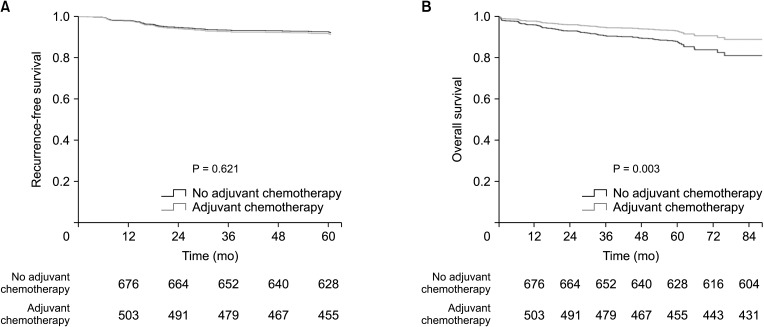
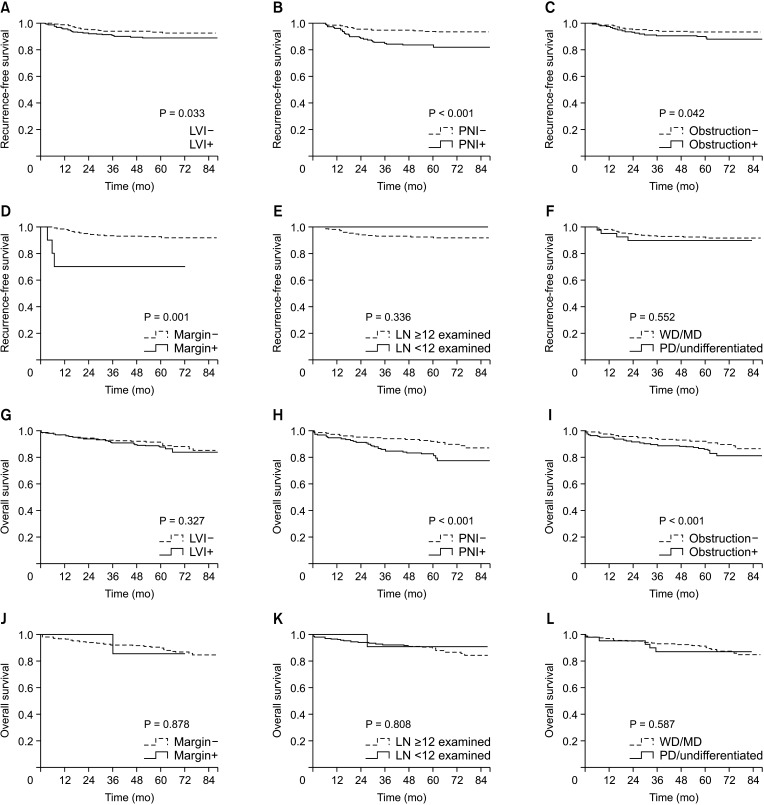




 PDF
PDF Citation
Citation Print
Print





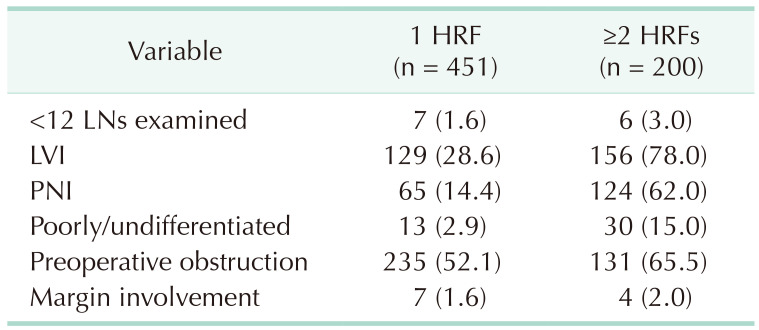
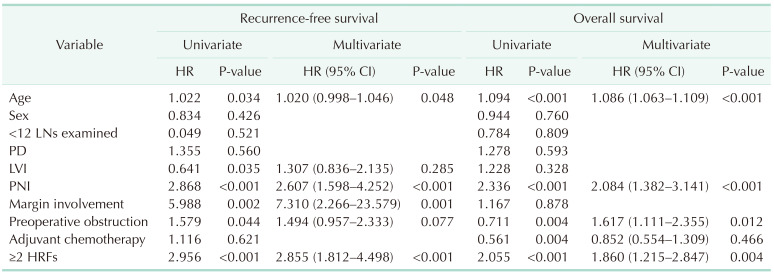
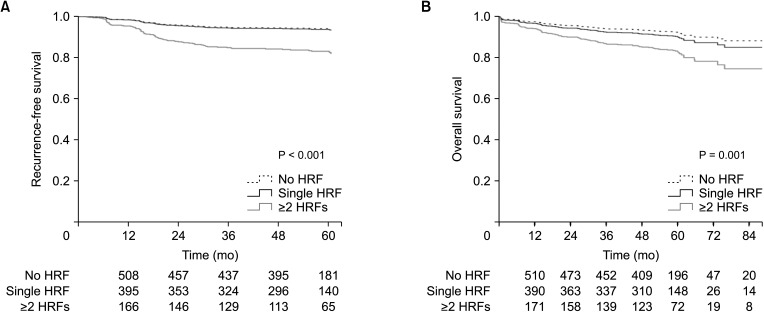
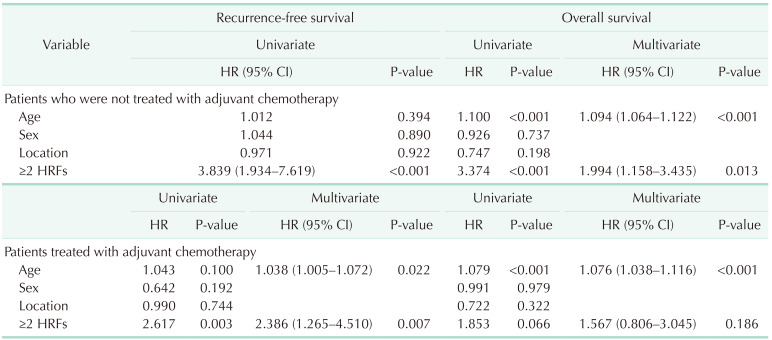
 XML Download
XML Download